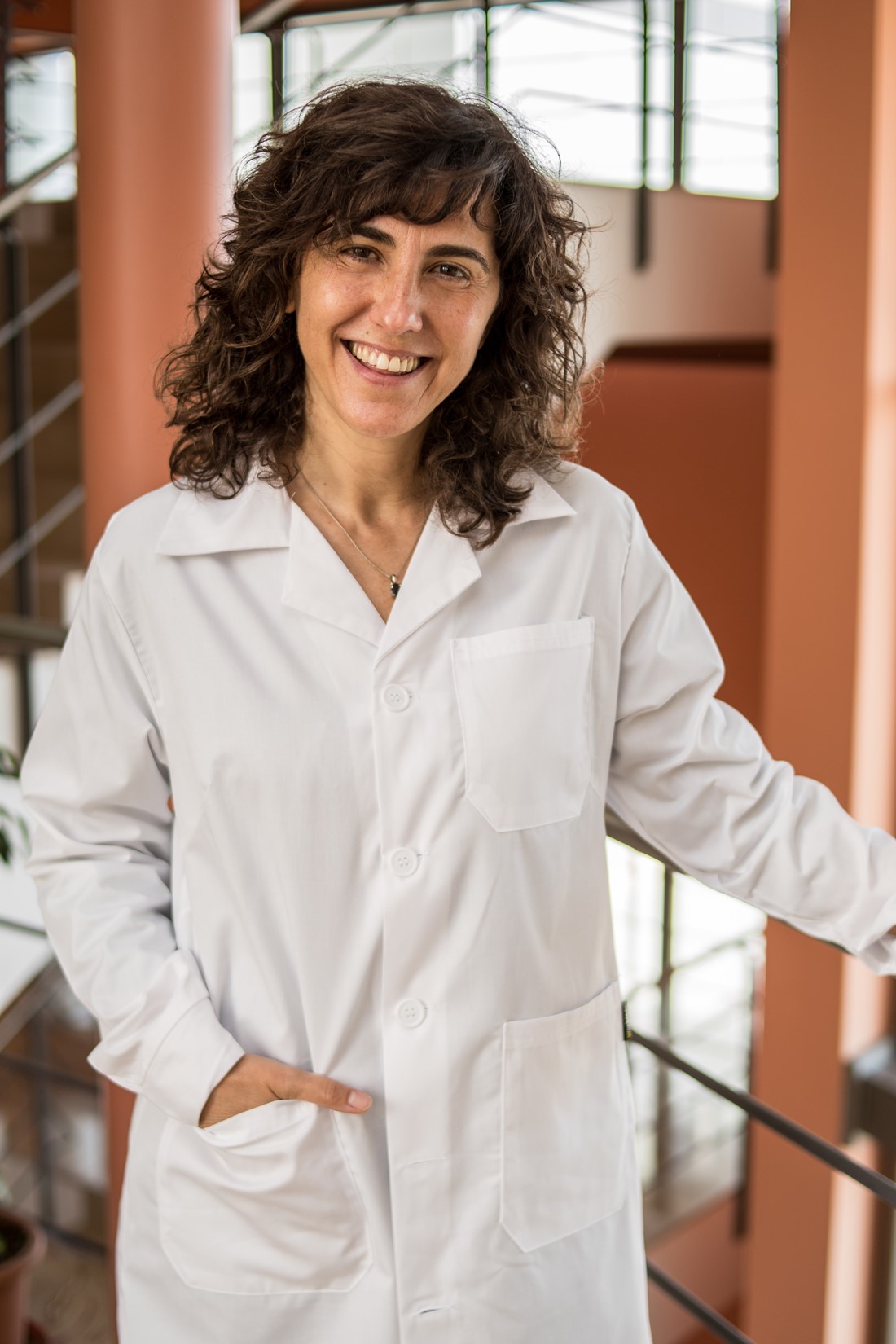Prestigious research prize awarded to Graphene Flagship researcher Ester Vázquez Fernández-Pacheco
Graphene Flagship-affiliated researcher Ester Vázquez Fernández-Pacheco has been awarded a prize by the government of Spanish region Castilla-La Mancha for Investigation and Innovation in Science.
In March 2023, Graphene Flagship-affiliated researcher Ester Vázquez Fernández-Pacheco was awarded a prize by the government of Spanish region Castilla-La Mancha for Investigation and Innovation in Science.
Vázquez is Director of the IRICA (Instituto Regional de Investigación Científica Aplicada – the Regional Institute of Applied Scientific Research). She has also been part of the Graphene Flagship Health and Environment Work Package since 2013 and works on water-soluble graphene-based materials for biological studies, as well as graphene-enriched soft materials for various biomedical applications.
We sat down with Ester to learn a little more about this recent award, her latest research, and how graphene can be meaningfully incorporated into applications across a range of sectors.

Ester Vázquez Fernández-Pacheco
Hi Ester! Congratulations on your award – that’s exciting news! Can you tell us more about it?
Thank you! Yes, I’d be happy to.
I am honoured to have received an award for Investigation and Innovation in Science from the Spanish regional government of Castilla-La Mancha. I work at the University of Castilla-La Mancha as the leader of the Microwave and Sustainable Organic Chemistry nanochemistry group, so being recognised by a regional body committed to highlighting good work that is being done here feels personal and meaningful.
Specifically, the award is for effort, quality, and excellent in investigation. Sixteen researchers from across the region have been recognised in this round of awards.
We understand that you have quite a wide range of research interests, including tissue engineering and robotics. What are the areas on which you are working the most at present?
We are currently focusing on the development of smart soft materials. These materials have mechanical properties similar to those of living tissues and also characteristics resembling them: for instance, their ability to respond to stimuli. For example, our pupils adapt their size to the amount of light, or if we get a small cut on our finger, the tissue will heal without us doing anything to make it happen. In this sense, our work consists of preparing materials that are able to respond to external stimuli and that are capable of intrinsic self-healing. Such materials are very important for applications in the two areas you mentioned.
The field I am most enthusiastic about now is soft robotics, where the development of these materials is very important for generating actuators with self-healing and proprioception capabilities. This is an emerging topic in which we are investing a lot of effort, developing new opportunities for collaborations.
How does graphene intersect with your work?
The soft materials mentioned above are based on hydrogels. These types of three-dimensional structures usually have poor mechanical properties and very high hydrophilicity. Our group has developed a mechanochemical method to prepare graphene in an easy way and in large quantities. It is a safe and sustainable methodology that produces a material that is highly compatible with the polymeric structures of hydrogels, enabling us to prepare graphene hybrid gels. The presence of graphene in the materials increases hydrophobicity and generates a highly favourable conductive environment for the growth of some types of cells. On the other hand, the mechanical properties of the materials are improved and the response to electrical stimuli is enhanced, which also favours the development of actuators for soft robotics.
What appeals to you most about developing biomedical applications?
I think it's a field where many things can be explored. From a basic point of view, there are still a number of processes that are not yet well understood, and chemists have always been instrumental in exploring such processes. However, I also feel there is a great opportunity to collaborate with mathematicians and physicists to develop models that could explain all these biological systems.
On the other hand, there is no doubt that developing systems that can help in the treatment of diseases or in health-related problems is always appealing because there are many people who can benefit from our research.
Can you please tell us more about the spin-off company that you cofounded, Biograph Solutions?
When we started working on the preparation of 2D materials, we were surprised by the fact that not enough attention was paid to the sustainability of the production methods. For example, the exfoliation of graphene was carried out using highly polluting organic solvents and sonication for a long time with significant energy costs. We, therefore, decided to develop methods of preparation considering all the concepts that had long been developed in sustainable chemistry for the preparation of other materials. Our 2D materials also disperse easily in aqueous solvents without the need for surfactants, so we decided to create a spinoff that could make the most of what we had learned over the years.
Notably, we have also specialised in the detection of trace amounts (ppb) of graphene in water. This is very important when it concerns the development of safe applications of this material, verifying that it is not released into the environment.
A broader question: what do investigation and innovation mean to you?
For me, there are two important points to highlight here. The first point is to be able to ask important questions that generate the answers that lead to progress. And the second aspect is that we should have the capacity to solve the problems that we are currently facing. I think this is our task as researchers. To do that, we have to get out of our comfort zone, interacting with other researchers from completely different areas than ours.
We’d also be curious to learn more about your experiences of pursuing research in Spain. There is a wide range of research and innovation across Spain, within the Graphene Flagship and more broadly – how do you perceive Spain in terms of opportunities for researchers, present and future?
Investment in research in Spain is not as large as it should be and certainly not as large as in other European countries. Moreover, opportunities depend very much on the regions and, therefore, some regions are better positioned than others.
But, in general, all this is compensated with a lot of creativity and a desire to innovate. Our way of life also favours communication and collaboration. I think these are our best presentation cards.




